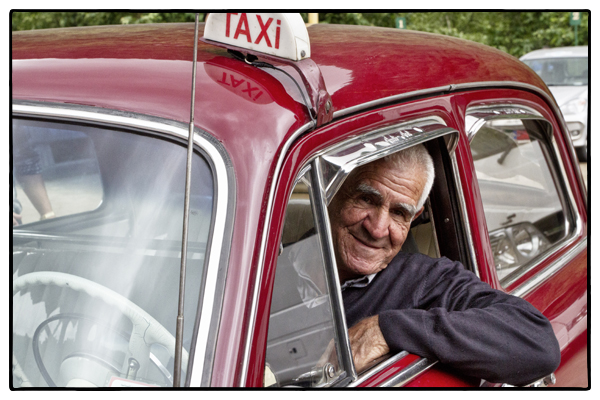Abu Layla must have been the inspiration for the Beirut drivers’ definition of hell on earth: To have at the same time an empty service in front, stopping unexpectedly and often (and always in the middle of the road so as not to lose a place in the traffic), and a full one behind, impatiently intent on delivering its squashed human cargo as fast as possible.
It was the frustration of losing his import/export business (or that’s what he told every passenger who cared to listen) that pushed Abu Layla. One day, one day, he’d be back on top. Meanwhile $400 at the Sunday morning Service car mart at Cola had secured him a 27-year-old Mercedes 200. The registration papers said it was red, although rust would have been a better description. None of the rear lights worked and the one functioning headlight was enough to spot the raised manhole covers and avoid destroying what was left of the suspension. The only important maintenance for Abu Layla was to keep the horn working.
His first lesson had been: hoot at everything, no matter which way they seem to be heading. He even allowed himself gratuitous honks at shapely legs in a mini-skirt although, he confided, foreigners, “even ugly ones,” were more attractive. By carefully avoiding use of the word “service” any stranger was a potential taxi fare. And a friendly rival driver had given him an invaluable tip: Never show passengers you have more than three LL1,000 notes (about $2 U.S.) notes. That way when someone offers a bigger note, you can say with a smile: “Sorry, I don’t have any change.”


Recent Comments